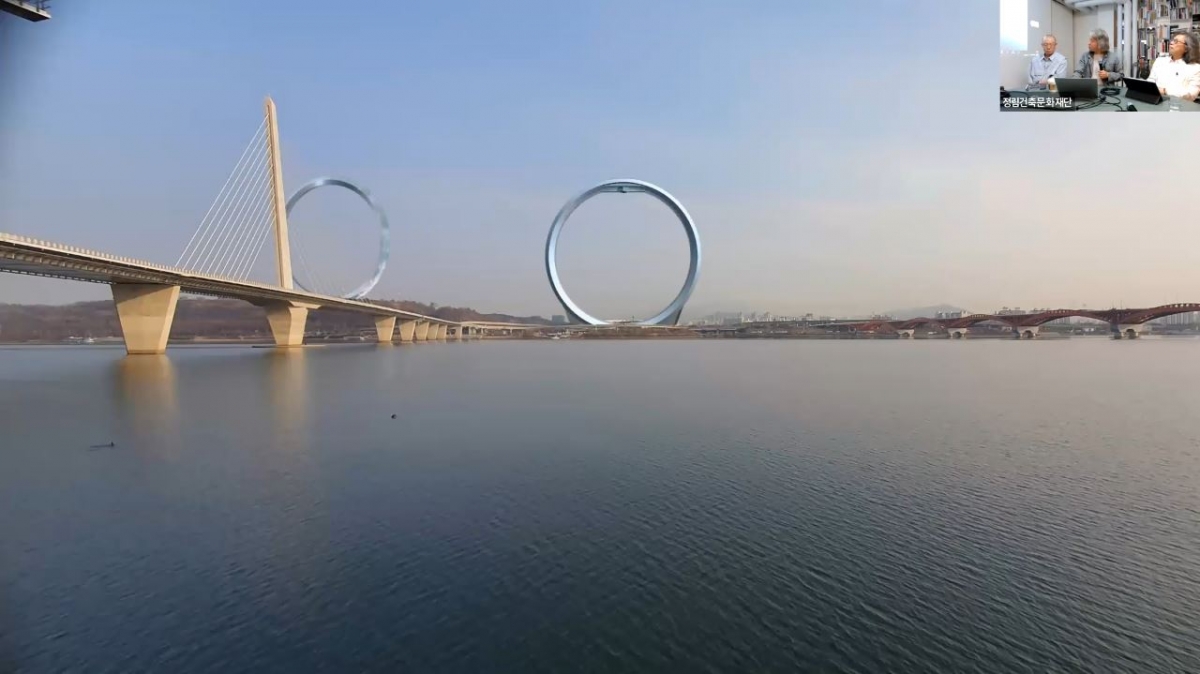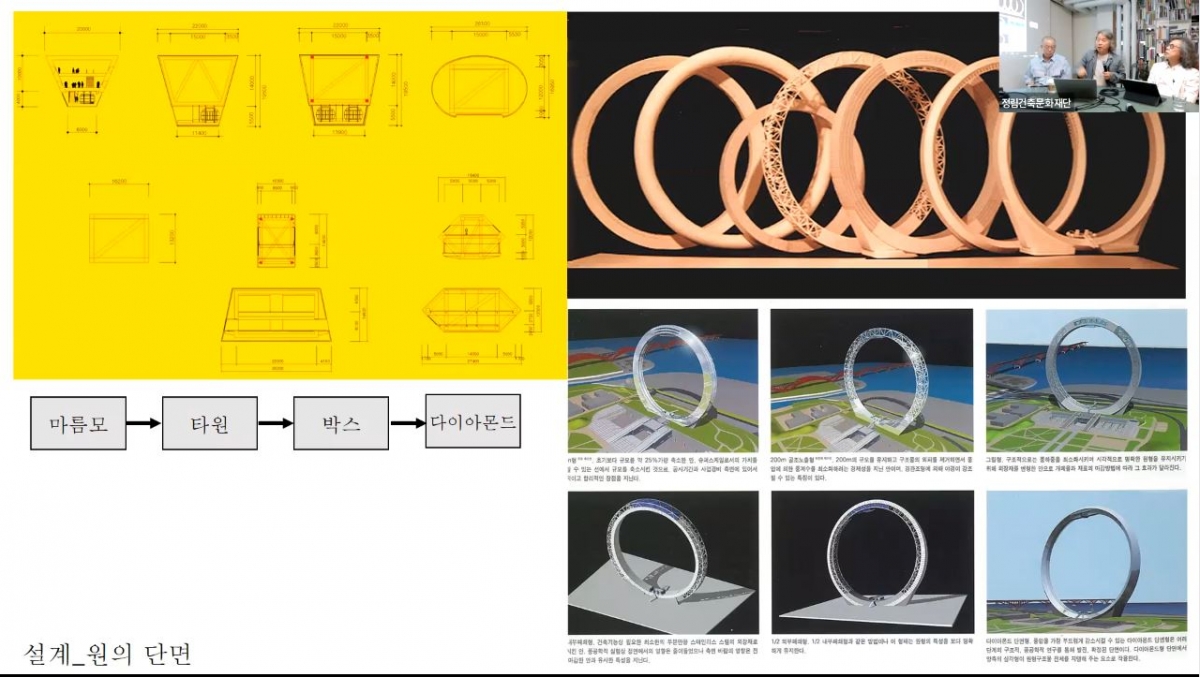SPACE July 2023 (No. 668)

Image of forum presentation
Screenshots from Zoom
On June 13, Hello, Winning Entries 2023, a forum held by the Junglim Foundation, was held to contemplate the ‘Millennium Gate’. Recently, an issue concerning plagiarism was raised that the plan to build Seoul Ring announced by the Seoul Metropolitan Government (SMG) appeared to resemble that of the Millennium Gate, the winner of the 1999 International Design Competition for National Symbolic Buildings by the Presidential Commission for the New Millennium. The event was organised to examine copyright awareness in the architectural field, along with the anguish experienced by the Millennium Gate project. The first presentation was given by Woo Daeseung (principal, Woo-projects Architects), the architect behind the Millennium Gate. He explained the process of the design fee litigation for the 11 years after the project was canceled, focusing on the difficulty in securing architects’ rights. This is because even if a judgment on compensation is obtained, it is easy for the state to avoid liability because it has established a separate legal entity (Millennium Gate Foundation) and contributed capital, and the interest in delaying the architect’s work is more than 15 times unjust compared to the interest for delaying the client’s payment of costs under the construction act. Therefore, he stressed that architects should attach a ‘design estimation’ to the preliminary contract and indicate all mutual dates in the ‘design schedule’ to distinguish the matter of responsibility between the client and the architect. He also shared the details of the advice given to the original design team, which the SMG clarified. SMG had been asking about the construction cost, stability, and precautions under the architectural law, but did not attribute the original author in the Seoul Ring announcent materials released in Mar.ʼ citing legal advice that circular structures are not the domain of copyright, even though they are located at similar points, such as the circle’s proportion, the site’s position. He also expressed regret over the SMG’s lack of copyright awareness, pointing out that the lower support structure was removed from the bird’s eye view to reduce similarity to the Millennium Gate. He concluded by asking fundamental questions such as ‘How do citizens benefit from the Seoul Ring plan?’ and ‘What authority does the SMG have to proceed with an architectural project without a design competition?’. Joung Sangjae (director, Copyright Committee of the Korea Architects Institute) contended that the current situation is a result of the complex entanglement with society’s perceptions of the architectural field. Since buildings are the home of everyday life, people focus on safety and structure, missing the essence of the architectural design business as a work of authorship. Furthermore, he emphasised that an architectural design contract is only a license for one architectural act using the design drawings, and the copyright belongs to the architect. In this situation, he presented copyright registration for design plans as a way for architects to put it into practice. Lim Hyoungnam (chairman, Korea Architects Institute) noted copyright awareness once again. He concluded by saying that architectural organisations should speak out for the rights of architects and the advancement of architectural culture in the future, referring to his statement on the Millennium Gate situation as chairman of Korea Architects Institute. by Kim Bokyoung

Composite image of Seoul Ring (left) and Millennium Gate (right) in presentation materials
Screenshots from Zoom

Structure developing process of Millennium Gate
Screenshots from Zoom





